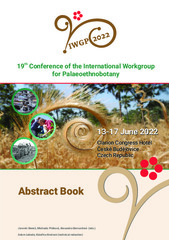Приказ основних података о документу
Early farmers in the Pelagonia Valley (Central Balkans): new research in plant economy ca. 6000-5700 BC.
| dc.contributor | Beneš, Jaromír | |
| dc.contributor | Ptáková, Michaela | |
| dc.contributor | Bernardová, Alexandra | |
| dc.creator | Sabanov, Amalia | |
| dc.creator | Antolín, Ferran | |
| dc.creator | Soteras, Raül | |
| dc.creator | Naumov, Goce | |
| dc.date.accessioned | 2024-01-16T15:19:37Z | |
| dc.date.available | 2024-01-16T15:19:37Z | |
| dc.date.issued | 2022 | |
| dc.identifier.isbn | 978-80-7394-937-2 | |
| dc.identifier.uri | http://reff.f.bg.ac.rs/handle/123456789/6032 | |
| dc.description.abstract | The earliest evidence for the start of the Neolithic in the Central Balkans is dated to the last several centuries of the 7th millenium BCE. One region which was densely occupied by early farming communities is Pelagonia, a valley spreading in North Macedonia and Greece. Most settlements were formed in the later phases of the Early Neolithic in terms of Balkan chronology, and were in use for several centuries, developing into tell sites where charred plant remains got preserved in excellent conditions. New research which involves archaeobotanical analysis is being conducted at three sites- Vrbjanska Čuka, Veluška Tumba and Vlaho. This has facilitated the understanding of the crop cultivation and the utilization of wild plants by the prehistoric settlers in the area, thus providing new and valuable data for a region close to the first focus of spread of farming in Europe. It is apparent that the economy and the diet of these communities principally relied on cultivated plants, even though they exploited a vast array of wild resources as well. The crop spectrum resembles the one in the surrounding areas like northern Greece and Bulgaria, with the predominance of hulled cereals- einkorn, emmer, Timopheevi wheat and barley (naked and hulled). Naked wheat was encountered in very small quantities. Furthermore, pulses like lentil and pea had a prominent role. Amid the plants which could have been gathered from the wild and brought to the settlement for consumption are various species with edible fleshy fruits, nuts, berries, seeds and leaves, such as sloe, bramble, cornelian-cherry, elderberry, hazel and fat-hen. In this presentation we will attempt to give a first regional synthesis about the onset of farming in the study area, including a discussion of domestication traits in cereals and pulses in the studied material. | sr |
| dc.language.iso | en | sr |
| dc.publisher | České Budějovice | sr |
| dc.rights | openAccess | sr |
| dc.rights.uri | https://creativecommons.org/licenses/by/4.0/ | |
| dc.source | 19th Conference of the International Workgroup for Palaeoethnobotany (IWGP), Abstract Book | sr |
| dc.subject | Southeastern Europe | sr |
| dc.subject | Early Neolithic | sr |
| dc.subject | Carpology | sr |
| dc.subject | Naolithization | sr |
| dc.title | Early farmers in the Pelagonia Valley (Central Balkans): new research in plant economy ca. 6000-5700 BC. | sr |
| dc.type | conferenceObject | sr |
| dc.rights.license | BY | sr |
| dc.citation.epage | 161 | |
| dc.citation.spage | 161 | |
| dc.identifier.fulltext | http://reff.f.bg.ac.rs/bitstream/id/16443/bitstream_16443.pdf | |
| dc.identifier.rcub | https://hdl.handle.net/21.15107/rcub_reff_6032 | |
| dc.type.version | publishedVersion | sr |

